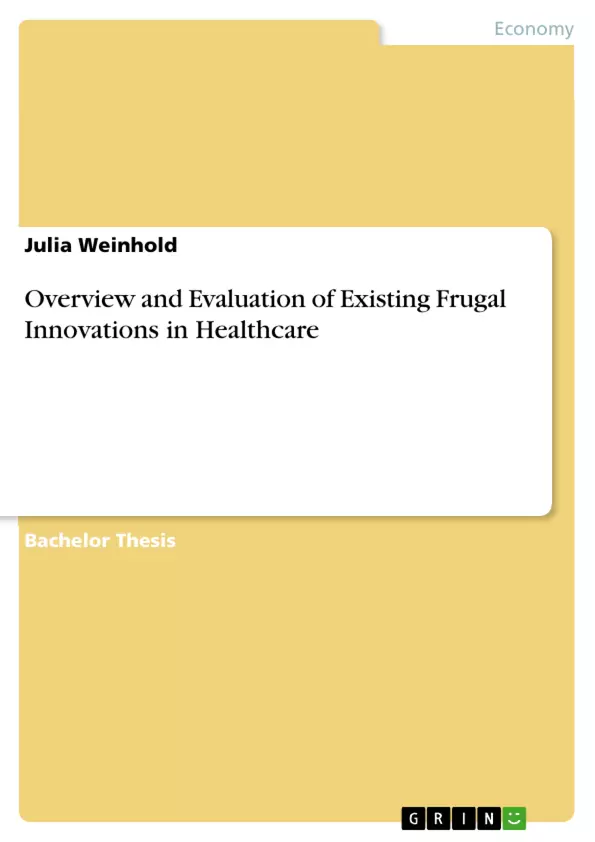The aim of this thesis is to contribute to a more precise understanding of frugal innovations in healthcare and further drawing scientific and entrepreneurial attention to them. With the help of the key elements of their business models, the procedures of ten frugal innovators are examined. All of them develop medical devices as well as services for healthcare delivery. The case studies provide empirical evidence to analyse under what conditions established companies of different types, can successfully commercialise frugal innovations. In this context, the development of a profound understanding of the target market as well as the design of a sustainable financing model, turned out to be the biggest challenges for the innovators. In addition, the success of the innovations is based on the establishment of a sector-wide network. Furthermore, this study aims to provide a basis for further investigations and the search for healthcare solutions to counteract the issue of medical under-supply in developing countries.
The thesis subdivides into four main sections: After the brief introduction, the theoretical foundations and conceptual frameworks are introduced to enable a basic understanding of the topic. In the same place, the significance of healthcare innovations is explained. The second part depicts the scientific discourse and state of the art in the field of frugal product and service development, based on information from extant literature. With the explanation of the applied research methodology and procedure of analysis, the empirical part of this work commences in the third part. Subsequently it portraits ten examples of frugal innovations in healthcare in detail. The fourth section entails the empirical evaluation and discussion of the prior part. It concludes with theoretical and managerial implications and a prospect for the importance of frugal innovations in healthcare. Potential limitations are discussed and recommendation for further research is given.
Inhaltsverzeichnis (Table of Contents)
- 1 Introduction
- 2 Definition and Relevance of Frugal Innovations
- 3 Existing Frugal Innovations in Healthcare
- 3.1 Products and Services
- 3.2 Type of Innovator
- 3.3 Countries of Development
- 4 Conclusion
Zielsetzung und Themenschwerpunkte (Objectives and Key Themes)
This bachelor thesis aims to provide an overview and evaluation of existing frugal innovations in the healthcare sector. The thesis explores the concept of frugal innovation, its relevance in the context of healthcare, and analyzes various examples of existing frugal innovations.
- Definition and characteristics of frugal innovations
- Relevance of frugal innovations in healthcare
- Examples of existing frugal innovations in healthcare
- Evaluation of the effectiveness and impact of frugal innovations
- Potential for future development and implementation of frugal innovations
Zusammenfassung der Kapitel (Chapter Summaries)
- Chapter 1: Introduction
This chapter introduces the topic of frugal innovations in healthcare and outlines the thesis's structure and objectives.
- Chapter 2: Definition and Relevance of Frugal Innovations
This chapter provides a detailed definition of frugal innovations and explores their relevance in various sectors, including healthcare. It discusses the key principles and characteristics of frugal innovations.
- Chapter 3: Existing Frugal Innovations in Healthcare
This chapter analyzes various examples of existing frugal innovations in healthcare. It categorizes these innovations by product/service type, innovator type, and country of development. It also discusses the advantages and limitations of each innovation.
Schlüsselwörter (Keywords)
Frugal innovation, healthcare, low-cost innovation, resource constraint, accessibility, affordability, sustainability, developing countries, emerging markets, innovation management, product development, service design, impact evaluation.
- Quote paper
- Julia Weinhold (Author), 2017, Overview and Evaluation of Existing Frugal Innovations in Healthcare, Munich, GRIN Verlag, https://www.grin.com/document/431621



